There are many things you can do to prepare for a crisis. You can store away food and supplies, create extensive stockpiles, or even build safety bunkers, but what if SHTF and you are stuck in the wild?
Luckily, there are various types of grass you can safely eat if SHTF and you cannot access a better food source.
Is It Safe To Eat Grass?
While grass is not an ideal option for nutrients, humans can eat some types of grass in a survival situation.
The biggest problem with eating grass is that it does not have the nutrition needed for long-term survival. Most types of grass are rich in cellulose, a kind of fiber that a human stomach can not effectively digest.
Grazing animals, such as cows, sheep, and goats, have evolved to digest grass and can absorb its nutrients because they keep it in their system for a long time.
Despite our less evolved digestive tract, humans can consume cellulose, and we often do, since cellulose makes up 33% of all vegetable matter. However, in this form, digestion is aided by other components.
Related: 34 Wild Plants Every Prepper Should Know
Besides food, cellulose is used to produce paper products, plastics, and photo film. Thus, while humans can eat the cellulose found within grass, this does not make it an excellent long-term food source.
Regardless of the pitfalls, grass can be an excellent option should nothing else be available. Below are a few of the grasses that are safe for human consumption.
9 Types of Grass You Can Safely Eat
There are many types of grass, and the grass that grows on your front lawn can be very different than that of your neighbor.
There are also wide varieties of wild grass, some of which are safe to consume should you find yourself in a situation where no food is available, for example, in a famine or if you are lost in the wild.
⇒ If You See This Plant, Whatever You Do, Don’t Touch It
Knowing which grass is safe to consume and how to identify these types is vital.
Barley Grass (Hordeum Pusillum)
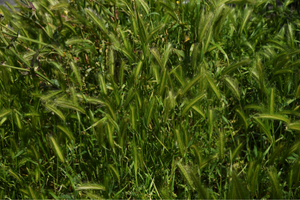 Little barley grass can be found throughout the US and Canada. Closely related to the native species found throughout South America, the North American version of this grass grows in sunny areas with dry soil.
Little barley grass can be found throughout the US and Canada. Closely related to the native species found throughout South America, the North American version of this grass grows in sunny areas with dry soil.
Barley is rich in nutrients and is often used to create juices or powders.
It is also considered a medicinal plant to Native Americans because of its abundance of vitamins.
Barley can be challenging to identify and is often confused with wheat. Thankfully, both are edible and non-toxic to consume. Barley grows around 2–4 ft tall, with a hollow stem and jointed leaf. This plant can be distinguished from wheat thanks to its small husk, which wheat lacks.
Barley leaves are also distinguishable, as the leaf collar will pull away from the plant’s stem and have two overlapping appendages. These appendages are called auricles and can be seen tightly clasped at the plant’s stem.
For safe consumption, barley should be dried, processed, and cooked before eating.
Bluegrass (Poa Species)
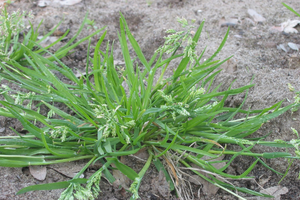 Various types of bluegrass grow throughout North America, the most common being Kentucky Bluegrass. Despite its name, it is not native to North America and was brought to the area by European settlers.
Various types of bluegrass grow throughout North America, the most common being Kentucky Bluegrass. Despite its name, it is not native to North America and was brought to the area by European settlers.
It is usually found in wet areas that are cooler in temperature.
Typically used as grass in pastures, it can be eaten raw but is not overly nutritious. Therefore, bluegrass is an option if nothing else is available, but it will not sustain you long-term.
Related: The Ultimate Survival Food You Can Only Harvest This Winter
While there are a variety of bluegrass species, bluegrass has a few distinct characteristics that can help in identification. Bluegrass leaves are boat-shaped at the tip, a key identifying feature.
Since the boat-shaped end may not be enough to distinguish this type of grass, there are a few other ways to identify this plant.
Bluegrass is considered a cool-weather grass and is smooth on its upper and lower surface. Different grass varieties are often more ridged than bluegrass and not as smooth, making it easier to identify.
Crabgrass (Digitaria Species)
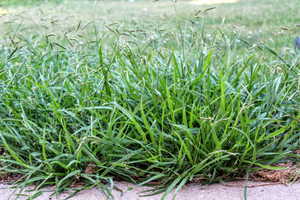 Two main types of crabgrass can be found in the US, large crabgrass (Digitaria sanguinalis) and southern crabgrass (Digitaria ciliaris).
Two main types of crabgrass can be found in the US, large crabgrass (Digitaria sanguinalis) and southern crabgrass (Digitaria ciliaris).
Both varieties grow in open areas, often taking over the region quickly. Due to this, crabgrass is often viewed as an invasive species.
Today, crabgrass is mainly used as animal feed. However, it was cultivated for food throughout history and is still eaten in some parts of the world.
Crabgrass is filled with nutrients. Thus, it was often used in traditional and alternative medicine. For example, crabgrass was often used to treat gonorrhea, cataracts, and other medical conditions throughout history.
Crabgrass is pretty easy to identify. This turf features long, light green blades that sometimes have a white strip running down the center.
Generally 1.0-1.3 cm wide, this grass is usually around 3-5 inches long with a pointed tip. It is the thicker blades of crabgrass that make it easy to identify. Most other grass types have thinner blades and deeper color.
Another way to identify this grass is by looking closely at the blade and stem. Longer crabgrass will have fine hairs along the blade and stem, and this stem will be reddish.
Lemongrass (Cymbopogon Citratus)
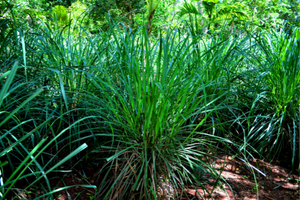 Lemongrass is a common perennial plant.
Lemongrass is a common perennial plant.
It is native to southeast Asia and can be found in many tropical regions worldwide. As it is a tropical perennial grass, lemongrass prefers warmer climates and will return yearly if cared for correctly.
Lemongrass can survive in environments that are cooler in temperature. However, it is important to note that frost will destroy this grass. Hence it is more commonly found in areas with warmer climates, such as tropical regions or the southern US.
Related: 15 Survival Plants You Should Hide From Your Neighbours
Lemongrass can be recognized for its powerful citrus odor. This type of grass also features a pale yellow-green color, making it quite distinct.
Lemongrass grows in clumps, with many stalks arising from the same base. While dependent on variety and location, lemongrass can be as tall as 2-3 feet.
Wood Millet Grass (Milium Effusum)
 Wood millet grass is found throughout the United States and Canada but is also common in Europe.
Wood millet grass is found throughout the United States and Canada but is also common in Europe.
Native to wet forest areas, wood millet is found growing along riverbanks and in the shaded parts of the forest near water. Commonly found in Minnesota, wood millet is tall and elegant in appearance.
Although unrelated, wood millet, similar to cultivated millet, has seeds that can be harvested and ground into flour. The flour created from wood millet can be used to bake various types of bread.
⇒ How To Make Bark Bread From A Tree That Grows On Almost Every Street In America
Wood millet produces flowers in loose clusters at the top of the stem. It is within these flowers that the seeds of wood millet grow and from which they can be harvested.
The leaves of a wood millet plant are 4-12 inches long and 5-15½ inches wide. These leaves are flat and rough textured spreading along the edges and sometimes the plant’s stem., which is smooth and hairless.
Goosegrass (Galium Aparine)
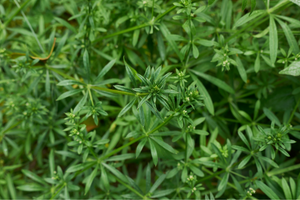 Commonly found in North America, goosegrass has a stem covered in fine hairs and often sticks to clothing.
Commonly found in North America, goosegrass has a stem covered in fine hairs and often sticks to clothing.
This grass is similar to cleavers or bedstraw, which are also safe to eat.
Goosegrass looks like it would not be edible due to its hairy stem.
However, these greens are tender and pleasant to eat when harvested in the spring while they are still young.
Goosegrass will produce small fruits that can also be consumed by picking them in late June to July when they are ripe. These fruits can be used as a coffee alternative if they are ground up and roasted.
Often confused with crabgrass and dallis grass, goosegrass has many stems that arise from one common root, and the base is silver or gray.
The leaves of this plant are dark green, flat, and slightly folded. Goosegrass often grows ½ inch to 2 inches tall and features a hairy stem that becomes more smooth the bigger it grows.
Wild Rice Or Rice Grass (Zizania Species)
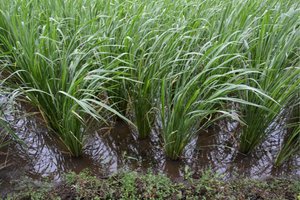 Once a traditional food for Native Americans, wild rice originated in the great lakes region. Authentic ‘wild rice’ is quite different from the rice at your local grocery store.
Once a traditional food for Native Americans, wild rice originated in the great lakes region. Authentic ‘wild rice’ is quite different from the rice at your local grocery store.
A semi-aquatic grass, wild rice grows in abundance throughout the US and Canada.
The wild rice found at the grocery store has been processed, making it distinct from the true wild variety with significant color and taste variations.
Wild rice that is genuinely wild will have a grain much longer than traditional rice varieties and be black or deep brown to greenish. This formidable food source also has a nutty or smoky flavor and firm texture.
Wild rice can be harvested and cooked the same way as any rice. However, cooking will take longer since the wild variety of this popular sidedish remains unprocessed and pure.
Wild rice is a tall grass that grows 1-1.5 meters high and can be as tall as 4.5 meters or 15 feet. The plant leaves are flat and strap-like, generally around 3-4 ft long and ¼ to 2 inches wide.
The head of wild rice can grow up to 2 feet long and a foot wide. This plant is adorned with white to purple flowers, and the grain or fruit grows loosely in heads at the top of the plant.
These grains are oval-shaped, yellow to reddish. However, when ripe, the seeds turn brown or black. The kernel is shallow and grooved, running the entire length of the hull.
Wild Oats (Avena Species)
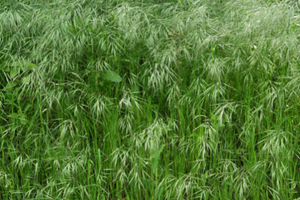 While native to Africa and Eurasia, wild oats have become naturalized worldwide. A popular plant in the production of many foods, this grass is an excellent source of nutrients.
While native to Africa and Eurasia, wild oats have become naturalized worldwide. A popular plant in the production of many foods, this grass is an excellent source of nutrients.
Wild oats are viewed as an invasive species in some areas. However, they are a handy plant to have around.
Often found growing along the roadside, wild oats can be dried and ground to create flour or can be consumed whole.
Wild oats may also be used to make juice or as a plant-based milk alternative. Like the cultivated forms, wild oats are rich in nutrients and vitamins, making this an excellent choice in a survival situation.
Wild oats are identifiable by their leaves, which tend to be hairy and have a slight blueish hue. Seeding leaves are twisted opposite to those on barley or wheat. Wild oat seeds are generally dark in color but can range in shades from cream to black.
Often confused with other plants, the sheath of a wild oat plant is rolled, with few hairs on the leaves themselves.
Alfalfa Grass (Medicago Sativa)
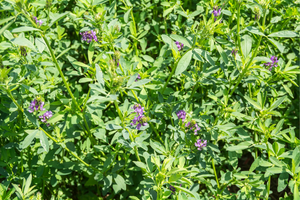 The benefits of alfalfa grass are plentiful, and eating this plant is recommended whether you are in a survival situation or not.
The benefits of alfalfa grass are plentiful, and eating this plant is recommended whether you are in a survival situation or not.
Alfalfa, which can be found worldwide, has anti-inflammatory properties, works as an antioxidant, and bolsters the immune system.
⇒ Click Here To Get The 10 Medicinal Plants You Need To Have In Your Backyard
If you find yourself in a survival situation surrounded by alfalfa, your chances of survival will become much more manageable.
Alfalfa is common in many places, and identification is essential. This plant can grow tall and features a deep root system reaching more than 15 meters. The roots of alfalfa make it a resilient plant that can withstand many environmental events, most significantly droughts.
The stems of an alfalfa plant are round and angular towards the top and are usually smooth. The flowers of this plant resemble a clover and are short and one-sided, with each flower cluster holding 10-20 purple flowers.
Can You Eat Your Lawn?
The quick, easy answer here is yes. You can eat your lawn. However, that does not mean that you should.
Your lawn, and those within most residential areas, are often filled with chemical pesticides that can be dangerous to your health if eaten.
Eating grass for short periods is generally safe, but the grass growing in your lawn provides little nutrition and could hold dangers. Thus, while you can technically cut your lawn with your teeth, this practice is not recommended.
Going Green
The species listed above are not an extensive list of the types of grasses available for human consumption. Many more kinds of grass can be safely consumed should you have no other options. However, most grass lacks the nutrients required to sustain you long-term, and attempting to survive on grass alone could be dangerous.
If you find yourself in a situation where you have no alternative food source, for example, getting lost while out on a hike, grass can provide some much-needed sustenance. Still, you will not want to rely solely on grass for survival, especially if you require the energy provided by nutrients found in other foods.
Knowing which grass varieties are safe to consume and which provide adequate nutrition is excellent practice in case of SHTF. Who knows, perhaps grass could save your life when you least expect it.

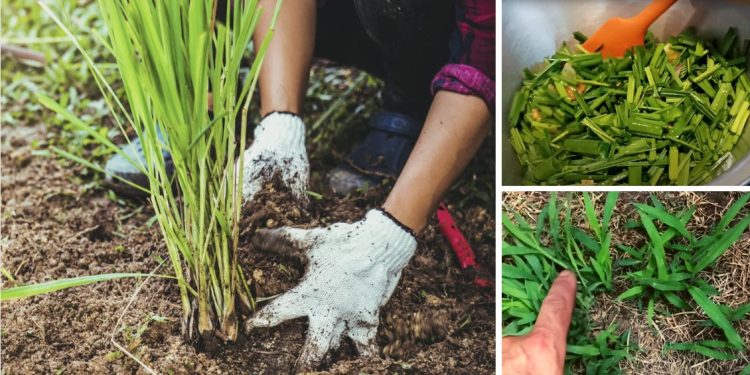




















Why would you want to?
WELL, SWEET PEA, WHEN THERE IS NO FOOD AT THE GROCERY STORE FOR WEEKS AND MONTHS AND NO EXPECTATION THERE WILL BE, IT IS KIND OF NICE TO KNOW I MIGHT NOT HAVE TO . . S T A R V E . . T O . . D E A T H ! There that answers that question!
If you haven’t prepared by now with stored food and a garden then you’re SOL. and my name is Farmer, not sweet pea. Right Cupcake?
O’ farmer, love bug, honey baby, sugar drop.
You know that I am just kidding with you… LMAO
Ya, when I saw that, I laughed and thought that they were going to get it, when you saw that. lol…
Have a good one… Farmer
stay sharp
North Korean escapees could add to your response ! The government had actually printed up a recipe booklet for the regular citizens on how to prepare grass because they were reduced to just that. Eat grass or starve. Only the elite and higher level military had access to consumables.
We’ll get there.
With the current pedo protectors in office (through obvious vote fraud) Americans may be reduced to the same grass eaters as the North Koreans. The goal seems to be to reduce the population in any way they can to reverse their fake global warming scam.
I’m sure that these greens can and should be mixed with something else to make a decent meal… A survival meal that might be decent, but more likely will include split roasting the slow fat kid down the block. Well…. probably not unless we’re related to Dahmer.
You forgot Cannabis! Now there’s a “Grass” you CAN cook with!
BWAAAAHAHAHAHAHHAHAHAHAHHAHAHAHA
My grandfather always said that crabgrass was the best grass to have on one’s lawn. It just takes over and is hard to get rid of. I can see the logic in that.
I believe most grass is so high in fiber that it will cause intestinal distress.
I’d rather stick with what most people call greens. Turnip greens, collard greens, dandelion greens… stuff like that. A friend of mine once said that a helper they had hired went down in the yard and picked a bunch of greens that he said were the best greens he’d ever eaten. That’s the kind of greens I want. Not poke salad, unless I am completely desperate.
Oh, dear. If you should ever find a nice poke weed or 2 at the very youngest and tenderest stage, and pick a few handfulls of baby leaves, and gently simmer a bit, maybe pour off broth and simmer again a couple more times, you will have a chance to taste one of the most delicate, delicious of all green leaved foods. It has no bitterness, and is almost sweet. Think delicate, very mild spinach without the strange bitter tang to it. I hope you get to try it before you graduate from our beautiful planet. I’d hate to think you might miss out on this lovely treat. Just a touch of salt and pepper and a little butter or bacon drippings or grease and have a memory worth having. Best to you, Old Beth
P.S. My mouth’s literally watering from the memories telling you about it. Literally one of the best tonic foods in the world. Right up there with dandilions and sassefras.
Everyone in my neighborhood ate that when I was young, even our family, but my mom always said it was poison. It still grows wild in my — everywhere! I’d love to learn to make it safe to eat.
After WW II, surrendered German soldiers were herded into open fields with barbed wire and not given water, food or shelter for 11 months. They dug holes with flat rocks for shelter and water. They ate grass to survive the winter. Most did not make it. I personally knew one of the officers who was ordered by Eisenhower to do that to them.
References and proof of that .
and the Holocaust was just propaganda – the concentration camp ovens were actually for pizza nite at the movies >>> it’s hard to believe there’s worse liars and evil than the Biden Gang but they have only hit the Stalin gulag level …..
I suspect a couple of folks didn’t register your sarcasm. LOL. I do know a few idiots who actually believe it.
Bulllllls*iiiiit! I knew a guy who knew a guy who overheard another guy isn’t evidence or proof, its hearsay. Or succinctly its bulls**t.
Maybe the Russians mighta done that, BUT NOT THE AMERICANS!!
My husband knew a German fellow out in Colorado who had been a POW in a camp out there. He told my husband that they were treated so well as POWs that they asked to stay in America after WWII was over!
I’ve read interviews with former U.S. POWs from Germany. One of the prison camps was in Florida. Some of the former inmates lived the rest of their lives in Florida as free men. They never had to shovel snow ever again!
please document, should be a war crime if factual.
Yes, what Tom Cool says is true. I read about that a few years ago. Also during the last days of the war Churchill bombed a couple of German cities with Phosphorus bombs targeting civilians, effectively torturing them to death. Trying to wash burning phosphorus off only makes it burn harder.
It is all on record. Those questioning this history merely need to google it. There are most likely YouTube videos on it as well. Real history, and the evil perpetrated by both sides of any conflict can be difficult to confront.
Also, if you study Antony C Sutton’s books, you will find that Hitler was financed into power by Wall Street financiers. Lenin, Trotsky and the Russian revolution were also financed by Wall Street. Go figure!
you need to write a book about this. I and most people are clueless.
Oh, Antony Sutton. Thank you so much for this info!!
Good that’s how wars should be fought
Oh, ouch. You make my heart cry. That is so sad. Old Beth
Total war is the only way to win
Eliminate everything and everyone that gets in your way
You have an evil, black heart.
It is nice to learn about other grasses and sources of food for the upcoming trials we are about to face. I am surprised that Clover and Plantain did not make the author’s list, but these have been discussed in other articles. I don’t plan on starving, but situations beyond my control may warrant a different diet due to a greatly reduced cache of food.
I guess I need to start prepping for chewing my cud.
Reason you always want to have a pond or river at your property. There you can plant cattails where every part is eatable, plus you can grow heavenly blue Morning Glory’s in case you want to forget you are hungry.
cattails are a great planting for guerilla gardening – eazy to transplant into a swampy area not good for much else – most likely won’t be mowed or molested – and not well known as food & herb by anyone but a determined forager …..
According to dr. Duke’s book “Medicinal plants of china”, Crabgrass leaves *might* be cyanogenic. Seed is edible, can be ground up and makes a fine white flour (Wood Millet too)
In WWII to survive, Japanese soldiers often collected grasses to boil and eat as a soup. Enjoyable, probably not, but that was not the point.
Wash the dog pee off first! 😀
Chuckle, chuckle.
Grow up, is your life that bad that you have to look for people to troll? You are worse than he is and that is a pretty low bar to have to clear. People don’t come here to see your drama.
Sounds like something a stalker would say.
Given that the main issue with grasses is the insoluble cellulose/fiber, I would think that the best way to consume them would be to simply grind the leaves with a mortar/pestle or blend/juice if you have a wee bit of electricity to spare, then simmer and sieve to access the nutrients and sugars. I’d still try not to consume too much…more of a nutrient burst than a staple and too much could be worse if you end up with digestive problems.
Honestly, any foraging article without detailed photos is fairly useless. And the photo that’s supposed to be goosegrass? Well, if you’re going to say it gets confused with crabgrass, that photo was a bad choice.
Agreed, I wanted high res pics of the plants, collectively and then individually. Hope they update soon.